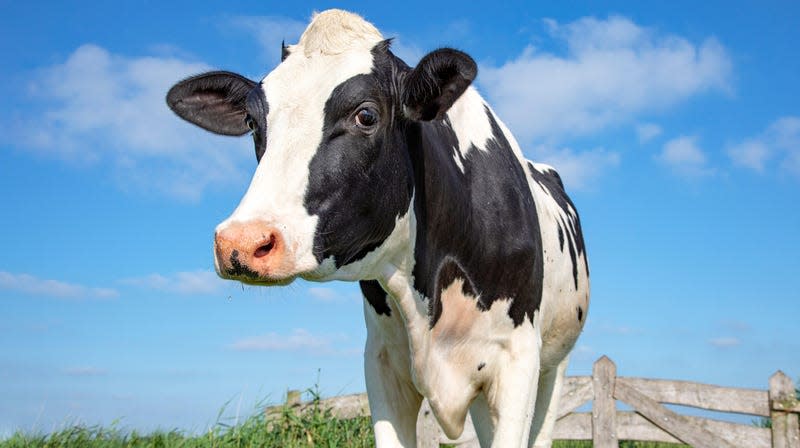Bird Flu Found in Cow Milk in Texas and Kansas

Bird flu has reached the cows. Health and agriculture officials announced this week that cattle in two states have tested positive for a strain of highly pathogenic avian influenza (HPAI), likely caught from wild birds. Though the virus seems to have sickened the cattle, it is not thought to pose a high risk to humans at this time.
The discovery happened during an investigation into outbreaks of a mysterious illness affecting cattle in Texas, Kansas, and New Mexico, which involved the U.S. Department of Agriculture, the Food and Drug Administration, the Centers for Disease Control and Prevention, and local agencies. Officials reported Monday that samples of unpasteurized milk collected from dairy cows on several farms in Kansas and Texas have tested positive for bird flu, specifically a strain of Type A H5N1 influenza.
The outbreaks largely affected older cattle, which have commonly experienced symptoms such as decreased milk production and low appetite. The investigation also found dead birds in the vicinity of these outbreaks, indicating their likely role as the origin. But initial testing of the flu strains found in these cattle has not found any major changes that would make them more able to spread or cause disease in humans, and there are currently no concerns about the virus reaching the public through contaminated milk, officials said.
“There is no threat to the public and there will be no supply shortages,” said commissioner Sid Miller in a statement from the Texas Department of Agriculture. “No contaminated milk is known to have entered the food chain; it has all been dumped. In the rare event that some affected milk enters the food chain, the pasteurization process will kill the virus.”
Bird flu is considered one of the most likely germs to become a pandemic threat. The generally high mutation rate of influenza and the novelty of a strain that successfully jumps from other animals to humans could potentially create a virus that not only spreads rapidly but is much deadlier than the typical seasonal flu.
Strains of H5N1 bird flu have been circulating for at least 25 years, sparking large and deadly outbreaks among wild birds and sometimes domestic poultry populations. But in recent years, we’ve started to detect more cases of bird flu in mammals, including minks, sea lions, and dolphins. Just last week, Minnesota officials reported finding H5N1 flu among baby goats living on a farm where an outbreak had recently infected poultry, the first such incident discovered in U.S. livestock.
Cases of H5N1 and other highly pathogenic avian influenza strains in humans have remained rare (if deadly) and difficult to transmit between people so far. But the more spillover between birds and mammals that occurs, the more likely that picture could change. Last year, the World Health Organization warned that while the risk of H5N1 spreading to people is low for now, “we must prepare for any change in the status quo.”
